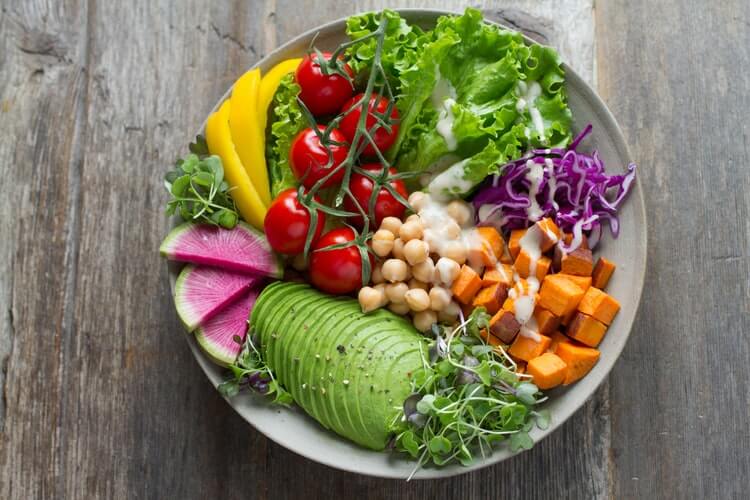
It depends on what type of disease you are trying to prevent, the definition of prevention can vary. For adults, this means maintaining a healthy weight and preventing excess weight gain. For children, prevention can be achieved by reducing intake of high-fat foods and increasing physical activity. You can also change social, economic and environmental policies to prevent obesity. Below are some ways to prevent obesity. These methods can either be combined or used individually. These strategies can make an impact on many people.
An integrated, multi-level approach to obesity prevention may be able to influence social norms regarding eating habits and promote healthy living. Although there is no one culprit to obesity prevention, food plays an important part in the problem. People who are overweight tend to eat more when they feel full. This causes them to eat until they feel satisfied. People who are anxious or stressed may eat more. The modern lifestyle is also less demanding on the body and more energetic. Additionally, many people don't do any physical activity, which burns calories. In such a situation, it is vital to act to eradicate this global epidemic.

These programs, which are community-based, have proven to be more effective in reducing the likelihood of obesity. These interventions target the environment. They include computer and TV usage, both of which are high-calorie and passive. They also target specific behaviors, such as the availability and use of play equipment within children's rooms. These programs don't just help you lose weight. They can also encourage active play and good sleep.
An effective obesity prevention program must target multiple levels of the population. The goal is to prevent obesity through changing behaviors that encourage overweight and unhealthy weight. A person should focus on fruits, vegetables, whole grains, nuts, and legumes. You can reduce your risk of developing heart disease and high cholesterol by doing this. They should incorporate exercise into their lives. This will increase their chance of losing weight. It is essential to prevent this from happening and it should be done by everyone.
Different prevention strategies achieve different goals. Universal obesity prevention plans, for example, focus on changing social norms that encourage obesity and the environment. Programs that target specific populations are used to prevent obesity. Programs that are targeted at children and teens have a higher chance of having positive effects on their health, than programs that are aimed at adults. Preventing weight gain in children and adolescents should be a part of any prevention strategy.

In addition to behavioral changes, a healthy diet is essential for obesity prevention. The best strategies for preventing obesity are to eat healthy and get plenty of sleep. These strategies will help you reach your weight goal and reduce the chance of developing chronic diseases. To reduce your risk of developing heart disease, diabetes, or high blood pressure, it is important to prevent obesity. You must also take steps to keep your body in top shape.
FAQ
Can I drink alcohol while exercising?
Yes. Alcohol can increase energy expenditure and speed up recovery, as well as reduce soreness.
Additionally, alcohol can increase insulin sensitivity and make it easier to absorb glucose.
However, alcohol can lead to dehydration that can slow down your metabolism. It can also decrease testosterone production, which can affect muscle-building ability.
For these reasons, women shouldn't drink alcoholic beverages before working out. Women who drink heavily should wait at LEAST 24 hours before they start working out.
It is important that women who are nursing avoid alcohol.
Men should have no more than one drink per day.
How fast can I transform myself?
It all starts by changing your mindset. You must first decide to change.
Once you decide that you want to change, it is time to set a minimum of 3 months' commitment to your fitness goals.
Then you need to find a program that fits into your lifestyle.
Setting realistic expectations is also essential. If you are unwilling to put in the time and effort necessary to achieve your goal, don't waste your money on a gym membership.
Instead, take advantage of your free time to exercise outside.
Walking around the block for an hour per day will help you lose 1 lb in a week.
Once you have a plan, you can start to organize your life according to this plan.
You should make sure you set aside time each morning to exercise and that you take breaks throughout your day to move.
Reward yourself for reaching milestones. You can buy accessories and clothes that reflect your success.
Why Metabolic Well-being is the Key to Aging Well
People are living longer lives today than at any point in history. They are also becoming more sick as a result. Our current medical science approach is not working, even though we've made many advances.
We need to change how we think about health and aging. Healthful aging requires that we start to think about metabolic health, which is not only weight loss but overall well-being.
And if you want to live an active life for decades to come, you should ensure that your metabolism stays strong and healthy throughout your entire lifetime.
There are many options to improve your metabolic health. You can improve your metabolic health by incorporating these 7 foods in to your diet.
-
Resveratrol has been found to be a key ingredient in blueberries, and it has been shown that it can help increase cell longevity. They also provide antioxidants and vitamins C & E.
-
Pinto beans and lentils make excellent sources of fiber as well as plant-based protein. These nutrients help keep blood sugar levels steady so they won't spike and crash.
-
Broccoli contains sulforaphane, shown in studies to protect cells against DNA damage. It might even slow down the progression of cancer.
-
Chia Seeds have high levels of omega-3 fatty oils and fiber. They're also loaded with antioxidants and protein. All these nutrients support heart health, brain function and gut health.
-
Green Tea has polyphenols called catechins. The catechins in green tea have been linked to reduced bone fractures, cardiovascular disease, cognitive decline, and diabetes risk.
-
Salmonis high in protein and rich in vitamin D is one of the most popular sources of lean proteins.
-
Walnuts are rich sources of omega-3s and antioxidants, such as alpha lipoic (ALA). ALA protects against inflammation and boosts energy production.
Statistics
- Are You One of the 20% of Guys (mh.co.za)
- According to the American Academy of Dermatology (AAD), men over 50 are at a heightened risk of developing it. (healthline.com)
- 10 pounds in a month is likely during a lean bulking phase, especially for beginners. (muscleandstrength.com)
- Candidates and applicants must pass all four tests at 70% (minimum level) to graduate from Basic Deputy U.S. Marshal (BDUSM) Training. (usmarshals.gov)
- The PRS enabled risk stratification for overall prostate cancer and lethal disease with a four-fold difference between men in the highest and lowest quartiles (HR, 4.32; 95% confidence interval [CI], 3.16-5.89). (pubmed.ncbi.nlm.nih.gov)
External Links
How To
How can a man lose weight in just 30 days.
Breaking down your fitness goals into manageable steps is the best way to reach your goals.
This is why you should make sure that you're working toward your goal every day. This could be anything from running 3km to doing 10 pushups in 5 minutes.
Positive results will be achieved if you do this consistently over time.
Consistency is the key here. You have to keep at it until you succeed!
What is the difference between Aerobic Fitness (or Anaerobic Fitness)?
Anaerobic fitness describes the body's ability not to use oxygen to perform intense physical tasks. Anaerobic pathways can be used to supply enough energy during high-intensity exercise. Anaerobic pathways can include glycolysis, creatinephosphate, the Phosphagen, and lactic acids.
Aerobic fitness, however, refers to the continuous practice of low-intensity aerobic exercise. While performing aerobic exercises, oxygen is used as the primary source of fuel for the cells. The aerobic pathway is more efficient than the anaerobic.
You need to build up your aerobic capability if you plan on running a marathon. If you don't focus on increasing your aerobic capacity, you will not be able finish the race.
Aerobic fitness is also referred to as cardiovascular fitness. The two most commonly used methods of measuring cardiovascular fitness, are VO2 Max testing and step tests.
Tests for VO2 Max
The body's maximum oxygen consumption during exercise is called the VO2 Max. This test measures the amount of O2 the body can utilize while exercising.
This is the best test to assess cardiovascular fitness. This test requires expensive equipment, and highly qualified professionals to administer.
Step Tests
Step tests are a simple but effective way to measure cardiovascular fitness. These tests require you to walk or run on a track or treadmill for a set amount of time, depending on your weight and age.
These tests are simple to perform, cost-effective, and easily accessible from almost any location. You can for instance walk on a treadmill 2 minutes, then stop for 1 minute. Throughout the session your heart rate should not exceed a specified range.
This is the "Bruce Protocol". Bruce, a runner, developed this protocol after realizing that his heart rate did not rise when he ran longer distances.